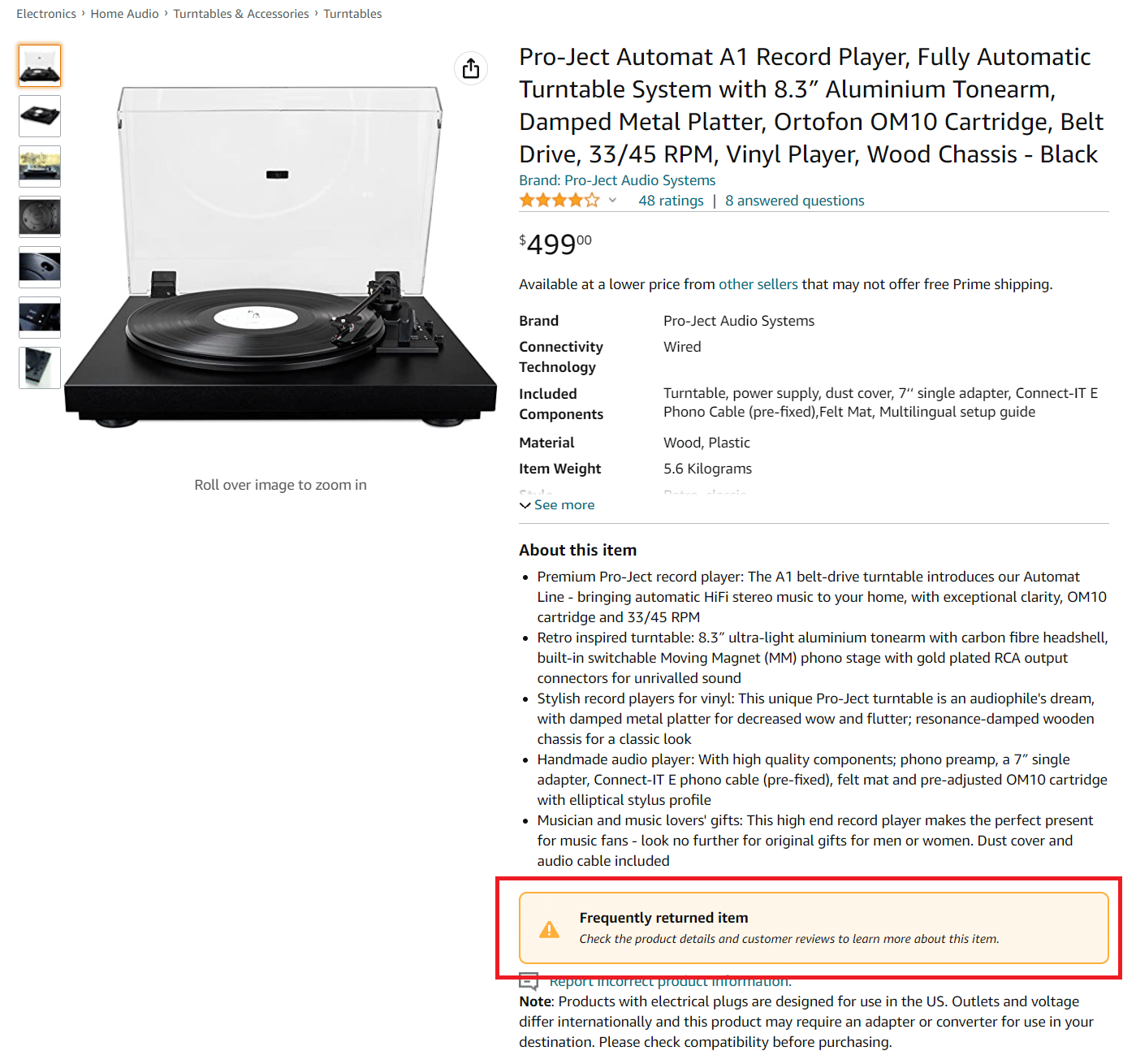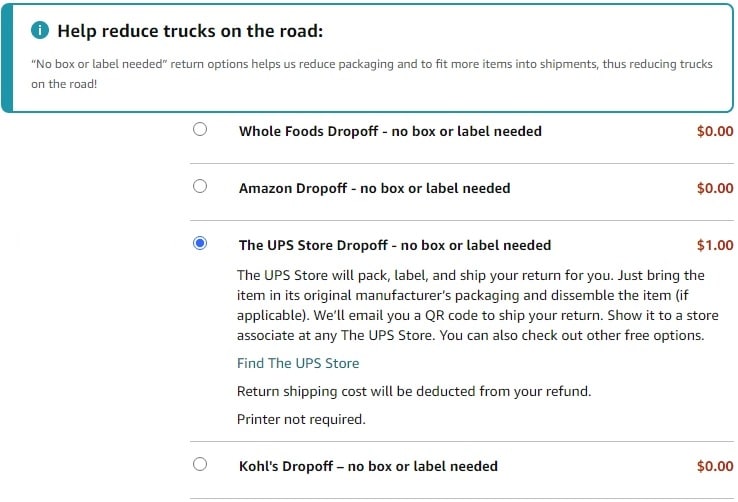No More Amazon Free Returns? Amazon Charging $1 for Some Returns

Is this the end of free returns on Amazon?
Recently, Amazon has started charging $1 for some returns dropped off at UPS Stores. This continues Amazon's trend in recent weeks of trying to lower return rates, most notably by now noting on some product detail pages when an item has a high rate of returns and seemingly its broader goal of “returning to healthy levels of profitability” (a stated goal of newish CEO Andy Jassy)
Amazon Targeting Returns for Increased Profitability
The $1 charge is only applied to customers when there is no free return option, such as returning an item to a Wholefoods or Kohl's Dropoff point. An Amazon spokesperson said, “If a customer would prefer to return their item at a UPS Store when there is a free option closer to their delivery address, a very small amount of customers may incur a $1 fee.”

Will Amazon Make Other Moves to Curb Returns?
The question now is, will Amazon make other moves to reduce the number of returns it experiences? It has the following options:
- Reduce the number of returns due to incomplete, confusing, or misleading product information
- Increase the cost of returns to customers
The most frictionless way for Amazon to reduce return rates is to institute additional mandatory attribute fields. This is something Amazon has consistently been doing in the past years. Requiring fields like sizing information can potentially help customers make better buying decisions and make it a win-win for everyone.
There's another thing Amazon can do: force sellers to provide more accurate and complete product information by charging sellers more for returns. However, this could be one more paper cut for sellers already struggling with a horde of increased fees and surcharges from Amazon.
The other option would be for Amazon to charge customers more for returns. However, sellers know that when marketplaces are faced with the decision to either charge more to customers or sellers, the customers normally win and the sellers absorb those fees. The fact that Amazon actually passed return costs in this case solely to the customer and not sellers is relatively surprising.
Regardless, sellers can expect, for better or worse, Amazon to continue to make moves towards reducing return rates across the company as it chases increased profitability.




